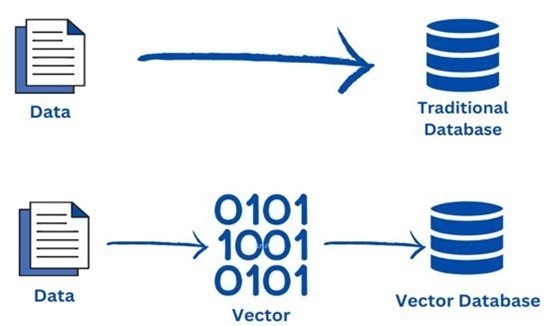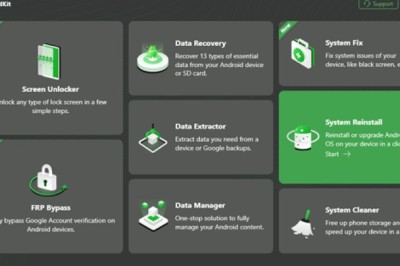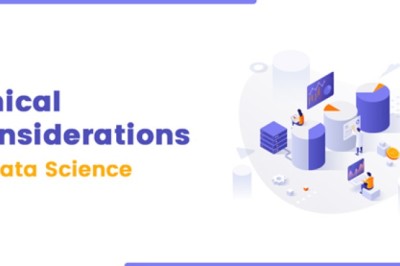views

Databases play a crucial role in modern applications, handling vast amounts of data for storage, retrieval, and manipulation. In this blog, we'll compare vector and traditional SQL databases. Did you know that SQL databases are widely used, with approximately 80% of all databases being based on the SQL model?
However, vector databases are gaining popularity due to their unique features. Before diving into the comparison, let's understand the basics. SQL databases organize data into tables, rows, and columns, while vector databases use a different approach based on mathematical vectors. Stick around to explore the differences and benefits of these database types!
Understanding The Different Databases
Traditional SQL Databases
Traditional SQL databases are widely used in various applications, accounting for approximately 80% of all databases. They follow a relational model, which organizes data into tables, each consisting of rows and columns.
Tables represent entities or concepts, with rows representing individual records and columns representing specific attributes or properties. SQL queries are used to retrieve and manipulate data stored in these databases.
By utilizing structured query language (SQL), developers can perform operations like selecting, inserting, updating, and deleting data with ease. The relational model and SQL queries provide a flexible and powerful framework for managing structured data efficiently.
Vector Databases
Vector database introduce a different approach to data storage and retrieval compared to traditional SQL databases. In the vector model, data is represented as mathematical vectors, which are collections of numerical values. Unlike the rigid structure of tables in SQL databases, vector databases allow for more flexible data representation.
They excel at handling complex data types such as images, documents, and time series. By leveraging vectorization techniques, these databases can perform similarity searches, enabling advanced use cases like recommendation systems and natural language processing.
Vector databases offer enhanced performance when dealing with high-dimensional data and can efficiently scale to handle large volumes of information. Their unique features make them well-suited for specific applications that require advanced data analysis and pattern recognition capabilities.
Comparison of Vector and Traditional Databases
Performance and Scalability
When it comes to handling large-scale data and complex queries, vector databases offer notable advantages over traditional SQL databases. Due to their optimized data structures and indexing techniques, vector databases can efficiently process and analyze vast amounts of information.
They leverage vectorization, a technique that performs operations on entire sets of data simultaneously, resulting in accelerated query response times. Additionally, vector databases excel at handling high-dimensional data, making them suitable for applications like machine learning and data analytics.
With their ability to scale horizontally by distributing data across multiple nodes, vector databases provide seamless scalability as data volumes grow, ensuring consistent performance even with massive datasets.
Schema Flexibility and Data Structure
Vector databases bring a more flexible approach to data structures and schema management compared to traditional SQL databases. In traditional SQL databases, the schema defines the structure of the data, and any changes to the schema require altering the database structure.
In contrast, vector databases employ schema-on-read or schema-on-write approaches, allowing for more dynamic schema handling. With schema-on-read, data can be ingested without a predefined structure, enabling adaptability to evolving data models.
Schema-on-write, on the other hand, enforces a predefined structure during data ingestion, ensuring data consistency. This flexibility in schema management makes vector databases well-suited for scenarios where the data structure may change frequently or when dealing with unstructured or semi-structured data.
Querying and Indexing
When it comes to querying capabilities, vector databases offer distinct features compared to traditional SQL databases. While SQL databases excel at performing joins, aggregations, and complex relational queries, vector databases specialize in similarity search and vector-based operations.
By leveraging indexing strategies tailored for high-dimensional data, such as approximate nearest neighbor (ANN) indexes, vector databases can efficiently perform similarity searches across large datasets. These capabilities are particularly valuable in applications like recommendation systems, image recognition, and natural language processing, where finding similar items or patterns is crucial.
Vectorization techniques further enhance query performance by operating on vectors as a whole, enabling parallel processing and speeding up computations. In contrast, traditional SQL databases focus on structured data and perform well with complex joins and relational queries.
Use Cases and Applications of Vector Databases
Vector databases exhibit strengths in specific use cases where they outperform traditional SQL databases. Let's explore some of these applications
Recommendation Systems
Vector databases are well-suited for recommendation systems that rely on similarity matching. By representing items and user preferences as vectors, these databases can efficiently calculate similarities and provide personalized recommendations in real-time.
This capability is invaluable in e-commerce, content streaming, and personalized user experiences.
Natural Language Processing (NLP)
NLP tasks, such as sentiment analysis, text classification, and language translation, benefit from vector databases' ability to process textual data efficiently. Vector representations, such as word embeddings or sentence embeddings, enable semantic understanding, allowing for more accurate analysis and faster query responses in NLP applications.
Machine Learning
Vector databases play a vital role in machine learning workflows. They provide efficient storage and retrieval of high-dimensional feature vectors used in training models.
Vector databases can handle large-scale datasets, support vector-based computations, and enable similarity searches required for tasks like image recognition, anomaly detection, and clustering.
Multimedia Analysis
With their ability to handle complex data types, vector databases excel in multimedia analysis applications. They can efficiently store and process images, audio, and video data, enabling tasks like visual search, content-based image retrieval, and multimedia recommendation systems.
Final Thoughts
Vectorize.io is a platform that empowers organizations to harness the full potential of Retrieval Augmented Generation (RAG) and transform their search platforms. By bridging the gap between AI promise and production reality, Vectorize.io has enabled leading brands to revolutionize their search capabilities. With a focus on accuracy, speed, and ease of implementation, Vectorize.io has become a trusted partner for information portals, manufacturers, and retailers seeking to adapt and thrive in the age of AI-powered search.






















Comments
0 comment